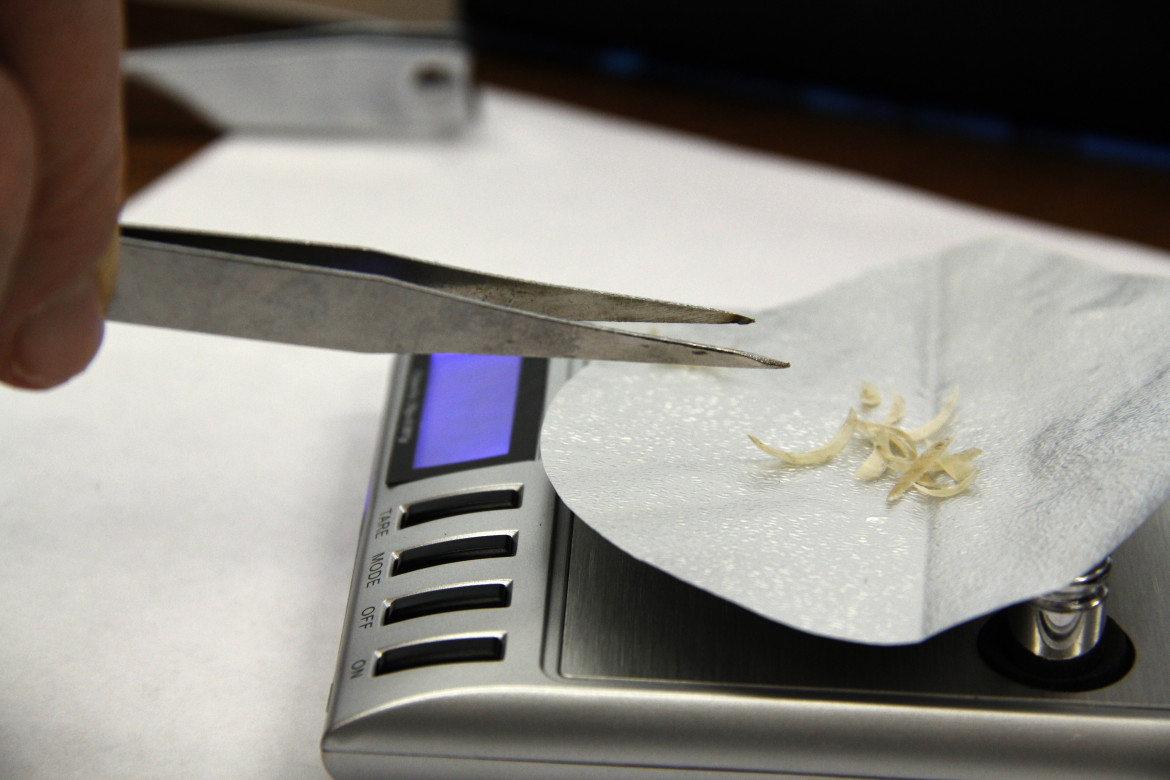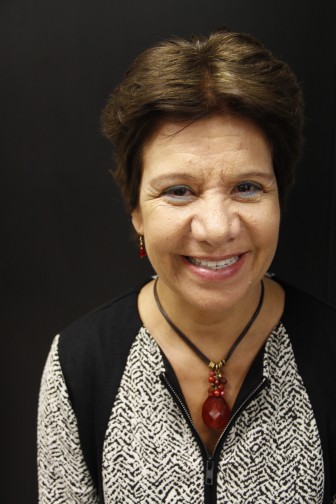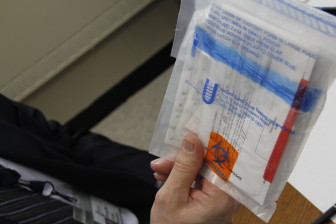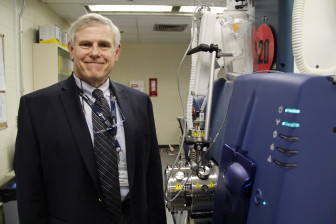Wisconsin Is National Leader on Drunken Driving Test
First state to use European test that detects heavy drinking going back months, helping target those who need treatment intervention.

About 100 milligrams of nails are all that’s needed to show if someone has been heavily drinking — at least six binges in the past three months. Photo by Kate Golden/Wisconsin Center for Investigative Journalism.
People lie. But their blood and fingernails do not.
Wisconsin has a drunken driving problem: More than one-third of the people convicted of operating while intoxicated have been convicted before, according to data analyzed by Gannett Wisconsin Media for its Under the Influence project with the Wisconsin Center for Investigative Journalism.
To find out which offenders are at risk of driving drunk again, and help them avoid it, the state requires drivers to undergo a drug and alcohol abuse assessment. Essentially, trained professionals ask drivers about their drug and alcohol use.
But the answers are unreliable. And alcohol is a pesky little molecule to detect because it fades so quickly from the body. The standard blood test only works for a few hours.
In the past several years, a handful of Wisconsin counties became the first nationwide to try a solution European nations have been using for years. They are testing repeat drunken drivers for molecular evidence of heavy drinking in nail or blood samples. Known as alcohol biomarkers, these tests can look back weeks or even months.
Researchers say their initial data show that biomarker testing during treatment may help repeat offenders stay sober longer, keep them from getting rearrested, and ultimately save counties money.

Researcher Pamela Bean started alcohol biomarker pilot projects in several Wisconsin counties after moving here from California. Photo by Kate Golden / Wisconsin Center for Investigative Journalism.
Most approaches to Wisconsin’s repeat drunken drivers have been about “increasing fees, or increasing jail time,” said Pamela Bean, the researcher who initiated the programs and is evaluating them. “This is a different approach.”
“The goal is not to catch people. It’s to get them sober, so that they’re not killing someone on the road, and that they actually discover that there’s another life out there,” said Doug Lewis, president and scientific director of U.S. Drug Testing Laboratories Inc. in Des Plaines, Ill., which is analyzing nail and blood samples from several Wisconsin counties.
In Dane and Waukesha counties, among the first to try the testing, Bean has found that drivers who tested positive during their year of monitoring were more likely to be rearrested. If biomarker positives turn out to be a red flag for recidivism, counties can target those drivers for extra treatment interventions.
In Waukesha, drivers under biomarker monitoring were re-arrested on average a year later than drivers who were not monitored.
Bean and Lewis believe more counties and states will be interested in biomarker testing if it is successful. But they say it is too soon to declare that.
“This is all data-driven, it’s all new,” Lewis said. “This is data no one else has really seen before.”
Biomarker expert Paul Marques, senior research scientist at Pacific Institute for Research and Evaluation in Maryland, said, “If you need to know what somebody’s drinking level is and whether it’s a public hazard, you need to use something that can get you objective information.”
Marques is an advocate for using the tests, which provide a look back in time and assist with treatment, in conjunction with ignition interlocks, which prevent drunk people from driving in the moment.
“I look forward to a day when some state has the moxie to do a three-legged program: interlock, alcohol biomarker monitoring, and treatment for those who cannot change behavior on their own,” he said.
Bean moved to Wisconsin 17 years ago from California, where she had been working with alcohol biomarkers. She was appalled by a report showing one in three Wisconsin drivers admitted to driving under the influence, and by the frequency of repeat operating-while-intoxicated convictions.
“Every time I would see in the newspaper, it was like, this person has been convicted by seventh OWI, eighth, 11, 13! I never saw that anywhere,” she said. “Then I said well, why are we not doing here the same thing that European countries are doing?”

Chain of custody: Clippings go into a bag labeled “biohazard,” even though they aren’t really biohazards, under the eye of an assessor. The bags are mailed to U.S. Drug Testing Laboratories in Des Plaines, Ill. Photo by Kate Golden / Wisconsin Center for Investigative Journalism.
In late 2005, she gave a presentation on alcohol biomarkers to a statewide advisory committee looking at new approaches for intoxicated drivers. After the meeting, the state wrote a letter to all 72 counties saying that this new approach was available and permissible under state law. Six counties were interested.
Waukesha County was first to try it in 2006. Dane followed in 2010, with some startup funding rounded up by former county executive Kathleen Falk.
Kenosha came on board, adding a suite of tests for different drugs as well — the law forbids operating “while intoxicated,” which can include other drugs in addition to alcohol. Forest, Vilas and Oneida counties got a grant to test for alcohol biomarkers and are looking at testing for drugs.
It works like this. A driver, generally with at least three OWI convictions, walks in for the mandatory alcohol and drug abuse assessment, part of a driver safety program required by the state. The assessor will ask the person about his or her substance use, recommend a treatment program, and initiate biomarker testing.
The first test is used as a baseline. It tells the assessor whether the driver told the truth — and can admit it, according to Lewis.

Doug Lewis, president and scientific director of U.S. Drug Testing Laboratories in Des Plaines, Ill., shows a triple quadrupole mass spectrometer, the equipment he uses to find minute traces of alcohol byproducts in fingernails from repeat drunken driving offenders. Photo by Kate Golden / Wisconsin Center for Investigative Journalism.
“The therapist has an enormous history now to break the denial. And that’s what probably is the biggest resistance to treating someone who has a chronic relapsing disease,” Lewis said.
The answer also may prompt the assessor to call the driver’s treatment provider and suggest fine-tuning the plan.
The next test comes near the end of treatment, to see if it is working. A driver who tests positive at that point has to come back for more testing the next month.
After several months of treatment are up, drivers usually have a gap of several months or a half-year before the driver safety plan ends. That is when data show a person is most at risk of relapsing, Bean said.
So drivers are required to submit one final test a month before the driver safety plan is up.
The tests seem to serve as a deterrent, Bean said. Waukesha and Dane drivers who tested positive then got a two-minute intervention call giving them the results, suggesting they strengthen their support networks and telling them they would be retested — and 60 to 80 percent of them tested negative the next time around.
Article Continues - Pages: 1 2
Under the Influence
-
No Treatment For Many Drunken Drivers
 Nov 16th, 2014 by Sean Kirkby
Nov 16th, 2014 by Sean Kirkby
-
Advocates Say State Not Serious About Drunken Driving
 Nov 12th, 2014 by Bill Lueders
Nov 12th, 2014 by Bill Lueders
-
Why Wisconsin Has Weak Laws on Drunken Driving
 Nov 10th, 2014 by Bill Lueders
Nov 10th, 2014 by Bill Lueders















